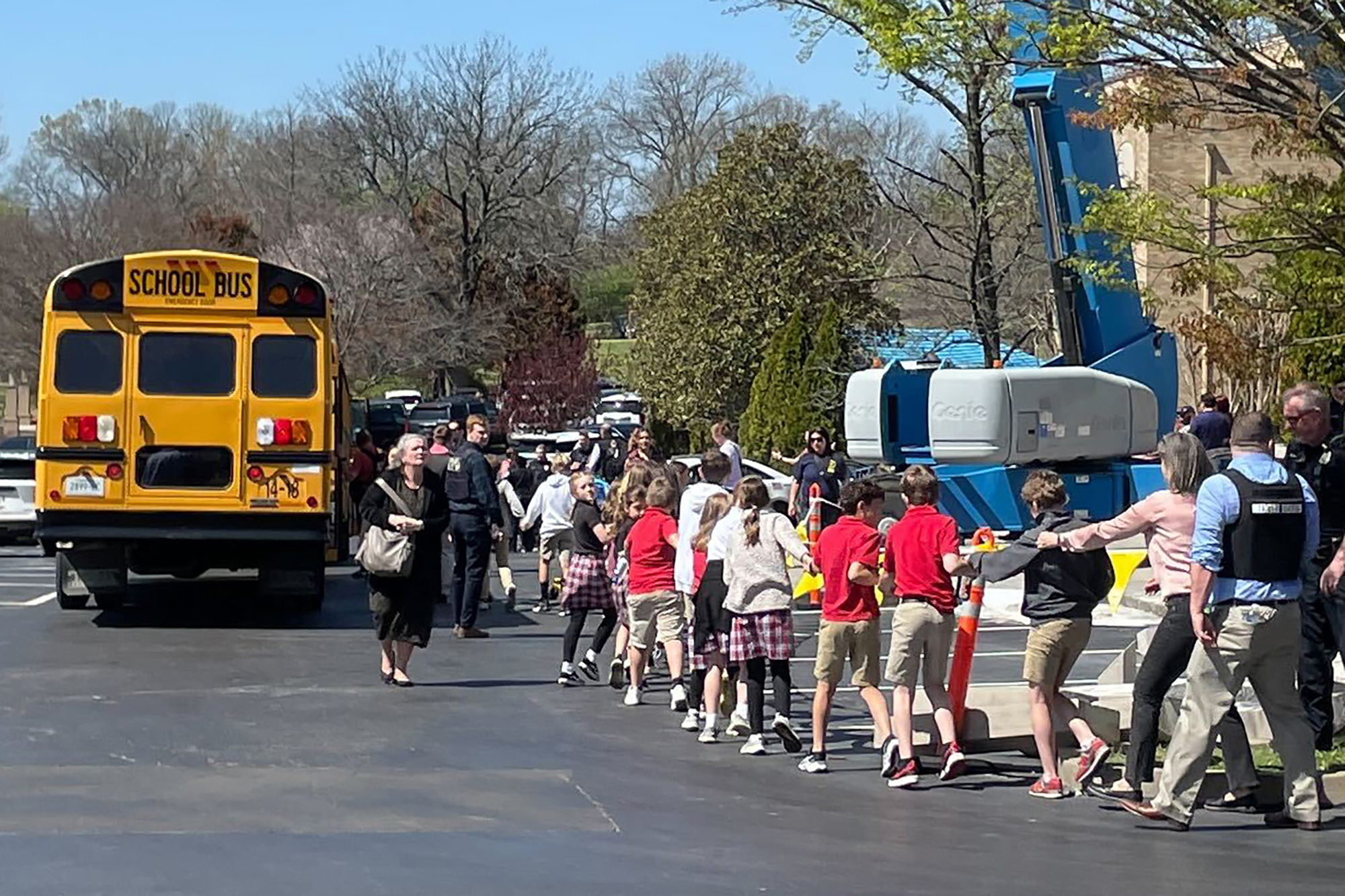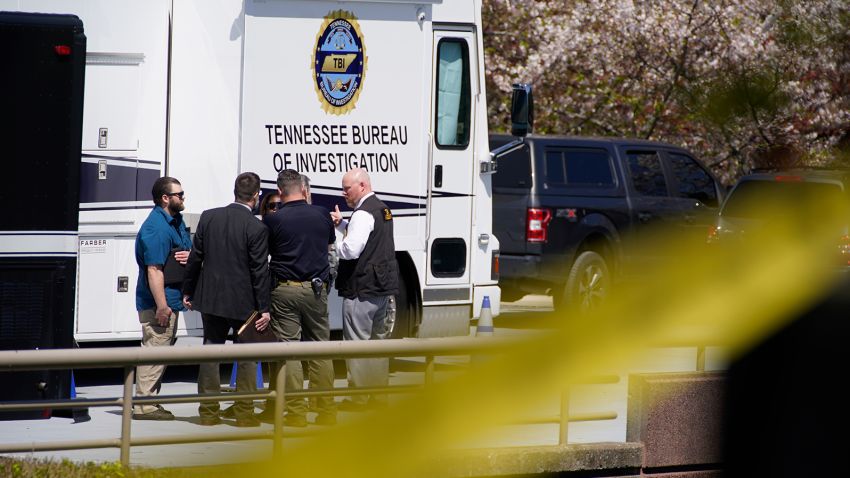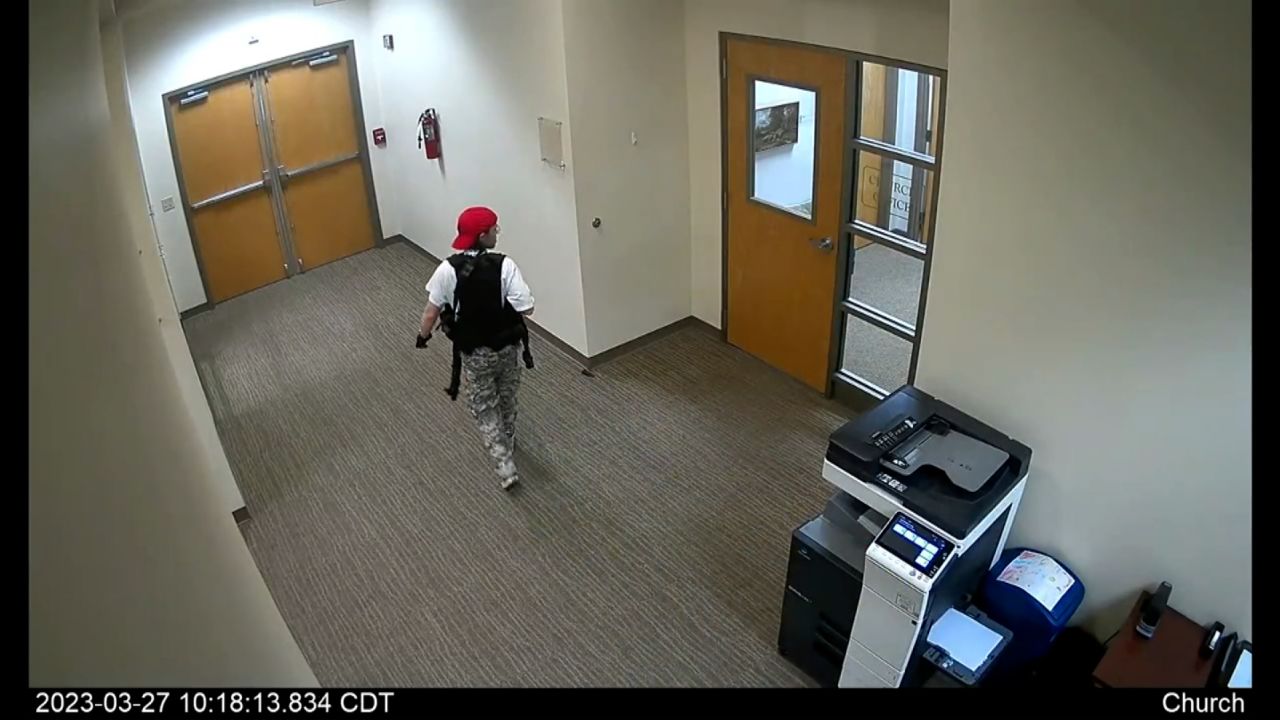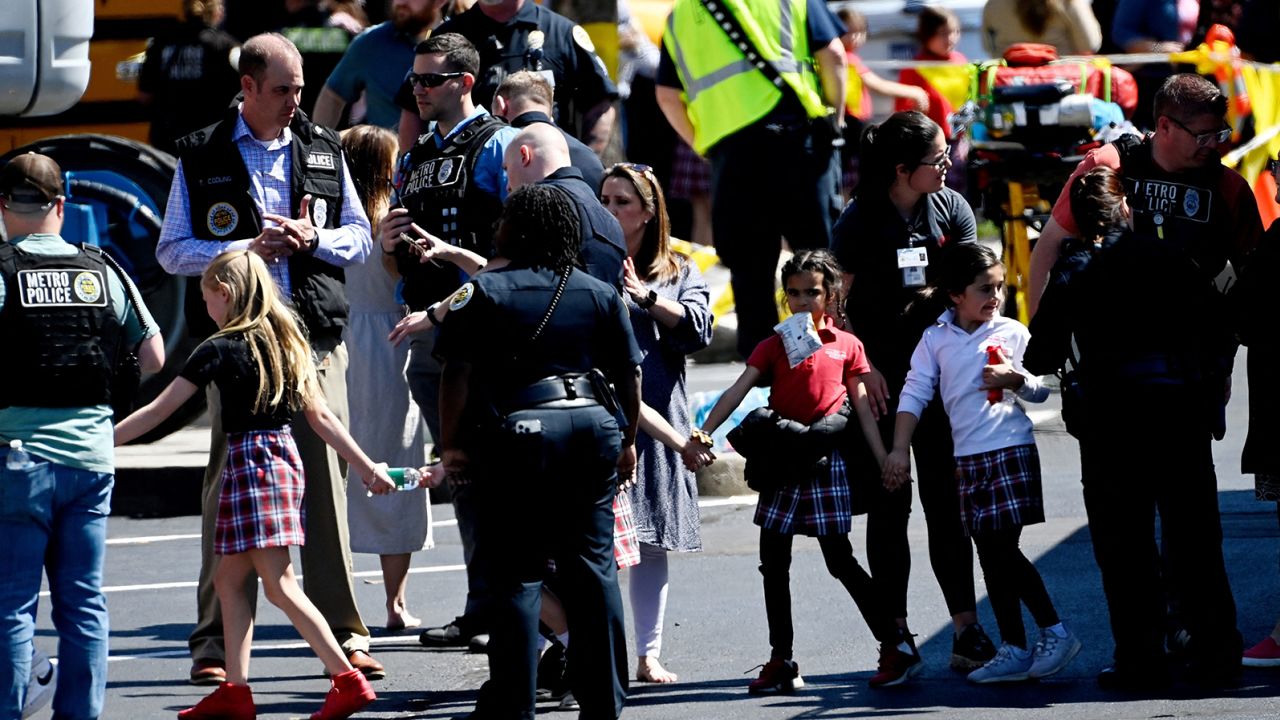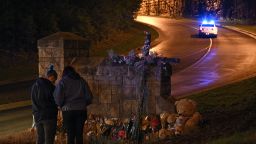Editor’s Note: This story contains graphic descriptions of violence.
CNN —
The 28-year-old who killed three children and three adults at a private Christian school in Nashville was under care for an emotional disorder and had legally bought seven firearms that were hidden at home, Metro Nashville Police Chief John Drake said Tuesday.
The parents of the shooter, Audrey Hale, spoke to police and said they knew Hale had bought and sold one weapon and believed that was the extent of it.
“The parents felt (Hale) should not own weapons,” the chief said.
On Monday morning, Hale left home with a red bag, and the parents asked what was inside but were dismissed, Drake said.
Three of the weapons were used in the attack Monday. The seven weapons were purchased between October 20, 2020 and June 6, 2022, police spokesman Don Aaron said.
Police also said Tuesday they did not know a motive. The shooter targeted the school and church in the attack but did not specifically target any of the six people killed, Aaron said. Hale’s writings mentioned a mall near the school as another possible target, he added.
Live updates: Nashville Covenant School shooting
The news conference came a day after Hale, a former student at The Covenant School, stormed into the elementary school and killed six people before being fatally shot by responding police officers.
The attack was the 19th shooting at an American school or university in 2023 in which at least one person was wounded, according to a CNN tally, and the deadliest since the May attack in Uvalde, Texas, left 21 dead. There have been 42 K-12 school shootings since Uvalde.
The victims included three 9-year-old students: Evelyn Dieckhaus, William Kinney and Hallie Scruggs, the daughter of lead church pastor Chad Scruggs. Also killed were Cynthia Peak, 61, believed to be a substitute teacher; Katherine Koonce, the 60-year-old head of the school; and Mike Hill, a 61-year-old custodian, police said.
“All of Tennessee was hurt yesterday,” Tennessee Gov. Bill Lee said in a video statement Tuesday. The governor said his wife Maria Lee was best friends with one of the victims, Peak, who was supposed to come over to the Lees’ home for dinner Monday evening.
“We can all agree on one thing – that every human life has great value. We will act to prevent this from happening again. There is a clear desire in all of us, whether we agree on the action steps or not, that we must work to find ways to protect against evil,” Lee said in the five-minute video.
Over the course of Tuesday, the details of the heinous attack came into view as police released bodycam footage of the fatal shooting of the attacker, Hale’s childhood friend revealed the shooter’s disturbing messages and those who knew the victims reflected on their lost loved ones.
Earlier Tuesday, police released body-camera footage from the two officers who rushed into the school on Monday and fatally shot the mass shooter.
The footage is from the body-worn cameras of officers Rex Engelbert and Michael Collazo, who police said fatally shot the attacker on Monday at 10:27 a.m. The video begins with Engelbert arriving at the school to find a woman outside who says the school is on lockdown but there are two children unaccounted for.
Another school official is seen handing the officer a key to open a door into the building, and a group of five officers enter the school amid wailing fire alarms and immediately go into several empty classrooms rooms to look for the suspect.
They heard gunfire on the second floor and so hustled up the stairs as the bangs grew louder, the video shows. The officers approached the sound of gunfire and Engelbert, armed with an assault-style rifle, rounded a corner and fired multiple times at a person near a large window, who dropped to the ground, the video shows.
Collazo then pushed forward and appeared to shoot the person on the ground four times with a handgun, yelling “Stop moving!” The officers finally approached the person, moved a gun away and then radioed “Suspect down! Suspect down!”
The video adds further insight into the timeline of the shooting and the police response. The first 911 call about the shooting came in at 10:13 a.m., and the shooter was killed 14 minutes later, according to police. The bodycam footage of Engelbert entering the school and shooting the attacker lasts about three to four minutes.
The Covenant School is a private Christian school educating about 200 students from Pre-K through 6th grade. The school is a ministry of Covenant Presbyterian Church, its website states.
Nashville Mayor John Cooper told CNN the swift police response prevented further disaster.
“It could have been worse without this great response,” the mayor of the police response. “This was very planned and numerous sites were investigated.”
The police chief similarly praised the response as swift.
“I was hoping this day would never ever come here in the city. But we will never wait to make entry and to go in and to stop a threat especially when it deals with our children,” Drake said in a Monday news conference.
Police said the shooting was targeted, closely planned and outlined in documents from the shooter.
Hale left writings pertaining to the shooting and had scouted a second possible attack location in Nashville, “but because of a threat assessment by the suspect – there’s too much security – decided not to,” Drake said on Monday.
The shooter left behind “drawn out” maps of the school detailing “how this was all going to take place,” he added.
The writings revealed the attack at the Christian school “was calculated and planned,” police said. The shooter was “someone that had multiple rounds of ammunition, prepared for confrontation with law enforcement, prepared to do more harm than was actually done,” Drake said.
Three weapons – an AR-15, a Kel-Tec SUB 2000, and a handgun – were found at the school, he said. A search warrant executed at Hale’s home led to the seizure of a sawed-off shotgun, a second shotgun and other evidence, according to police.
“They found a lot of documents. This was clearly planned,” Mayor Cooper said. “There was a lot of ammunition. There were guns.”
Police have referred to Hale as a “female shooter,” and at an evening news conference added Hale was transgender. Hale used male pronouns on a social media profile, a spokesperson told CNN when asked to clarify.
Hale graduated from Nossi College of Art & Design in Nashville last year, the president of the school confirmed to CNN. Hale worked as a freelance graphic designer and a part-time grocery shopper, a LinkedIn profile says.
Nashville police release security footage in school shooting
Information from police and from the shooter’s childhood friend helped illuminate a timeline of the deadly attack.
Just before 10 a.m. Monday, the shooter sent an ominous message to a childhood friend, the friend told CNN on Tuesday. In an Instagram message to Averianna Patton, a Nashville radio host, just before 10 a.m. Monday, the shooter said “I’m planning to die today” and that it would be on the news.
“One day this will make more sense,” Hale wrote. “I’ve left more than enough evidence behind. But something bad is about to happen.”
Patton told CNN’s Don Lemon she was the shooter’s childhood basketball teammate and “knew her well when we were kids” but hadn’t spoken in years and is unsure why she received the message. Disturbed by its content, she called a suicide prevention line and the Nashville Davidson County Sheriff’s Office at 10:13 a.m.
At that very minute, police in Nashville also got a 911 call of an active shooter inside the school and rushed there.
Armed with three firearms, the shooter got into the school by firing through glass doors and climbing through to get inside, surveillance video released by Metro Nashville Police shows. Pointing an assault-style weapon, the shooter walked through the school’s hallways, the video shows.
As the first five officers arrived, they heard gunfire from the second floor. The shooter was “firing through a window at arriving police cars,” police said in the news release.
Police went upstairs, where two officers opened fire, killing the shooter at 10:27 a.m., Aaron, the police spokesperson, said.
After the shooter was dead, children were evacuated from the school and taken in buses to be reunited with their families. They held hands and walked in a line out of the school, where community members embraced, video showed.
“This school prepared for this with active shooter training for a reason,” Nashville Metropolitan Councilman Russ Pulley told CNN. “We don’t like to think that this is ever going to happen to us. But experience has taught us that we need to be prepared because in this day and time it is the reality of where we are.”
Patton, meanwhile, had “called Nashville’s non-emergency line at 10:14 a.m. and was on hold for nearly seven minutes before speaking with someone who said that they would send an officer to my home,” she told CNN affiliate WTVF. An officer did not come to her home until about 3:30 p.m., she said.
Two Covenant School employees are among the victims of Monday’s mass shooting, according to the school.
Katherine Koonce was identified as the head of the school, its website says. She attended Vanderbilt University and Trevecca Nazarene University in Nashville and got her master’s degree from Georgia State University.
Sissy Goff, one of Koonce’s friends, went to the reunification center after the shooting and suspected something was wrong when she didn’t see Koonce there.
“Knowing her, she’s so kind and strong and such a voice of reason and just security for people that she would have been there in front handling everything, so I had a feeling,” Goff said.
She said Koonce was a calming influence and even got a dog named “Covie” who greeted students before and after school.
“Parents are so anxious, kids are so anxious, and Katherine had such a centering voice for people,” Goff said.
Mike Hill was identified in the staff section of the Covenant Presbyterian Church’s website as facilities/kitchen staff. Hill, 61, was a custodian at the school, per police. A friend confirmed his image to CNN.
Hill was the father of seven children and had 14 grandchildren, his family said in a statement obtained by CNN affiliate WSMV. He loved to cook and spend time with his family, it added.
“We would like to thank the Nashville community for all the continued thoughts and prayers. As we grieve and try to grasp any sense of understanding of why this happened, we continue to ask for support,” the statement said.
His daughter, Brittany Hill, said in a Facebook post on Monday that her dad “absolutely loved” his job.
“I have watched school shootings happen over the years and never thought I would lose a loved one over a person trying to solve a temporary problem with a permanent solution,” she said. “I am so sorry for the loss of those children,” she added.
Cynthia Peak, 61, was believed to be a substitute teacher, police said Monday.
The family of Evelyn Dieckhaus, one of the 9-year-old victims, provided a statement to CNN affiliate KMOV.
“Our hearts are completely broken. We cannot believe this has happened. Evelyn was a shining light in this world. We appreciate all the love and support but ask for space as we grieve,” the family said.
The Covenant School issued a statement Monday night grieving the shooting.
“Our community is heartbroken. We are grieving tremendous loss and are in shock coming out of the terror that shattered our school and church. We are focused on loving our students, our families, our faculty and staff and beginning the process of healing,” the school said in a statement.
“Law enforcement is conducting its investigation, and while we understand there is a lot of interest and there will be a lot of discussion about and speculation surrounding what happened, we will continue to prioritize the well-being of our community.
“We appreciate the outpouring of support we have received, and we are tremendously grateful to the first responders who acted quickly to protect our students, faculty and staff. We ask for privacy as our community grapples with this terrible tragedy – for our students, parents, faculty and staff,” the statement said.
Firearms were the leading cause of death among children and adolescents in 2021, for the second year in a row, according to a CNN analysis of data from the US Centers for Disease Control and Prevention.
Firearms first surpassed motor vehicle crashes as the leading cause of death for children and adolescents in 2020, after a sharp increase in the first year of the pandemic. Deaths from both firearms and motor vehicle crashes increased again in 2021, CDC data shows.
Cooper, the Nashville mayor, said he is “overwhelmed at the thought of the loss of these families, of the future lost by these children and their families.”
“The leading cause of kids’ death now is guns and gunfire and that is unacceptable,” Cooper said.
In the wake of the attack, President Joe Biden called on Congress to act on gun control measures, but Republicans legislators showed little willingness to address the issue.
“We owe these families more than our prayers. We owe them action,” Biden said.
“People say, why do I keep saying this if it’s not happening?” he continued. “Because I want you to know who isn’t doing it. Who isn’t helping. To put pressure on them.”
Adblock test (Why?)
Covenant School shooter was under care for emotional disorder and hid guns at home, police say - CNN
Read More




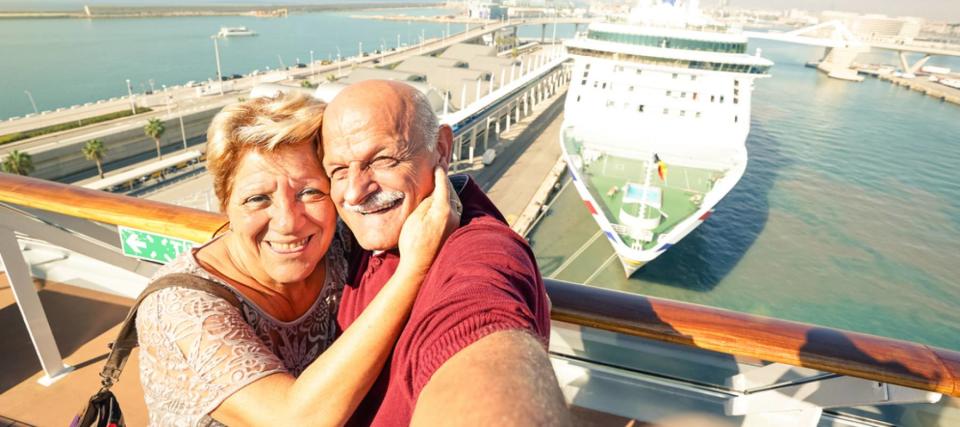



/cloudfront-us-east-2.images.arcpublishing.com/reuters/5RNRMO775FNQHIWOLJ22HUDWM4.jpg)



